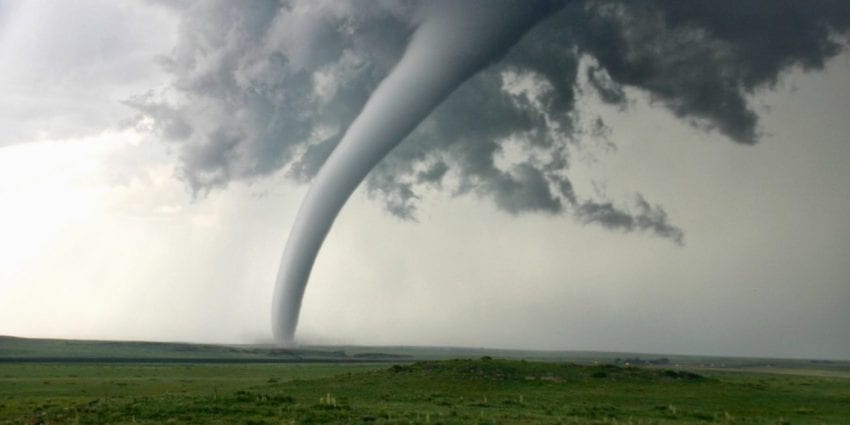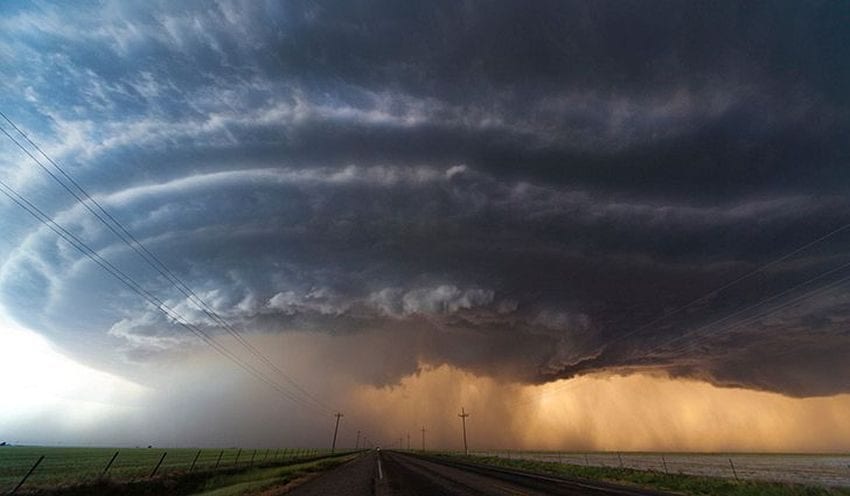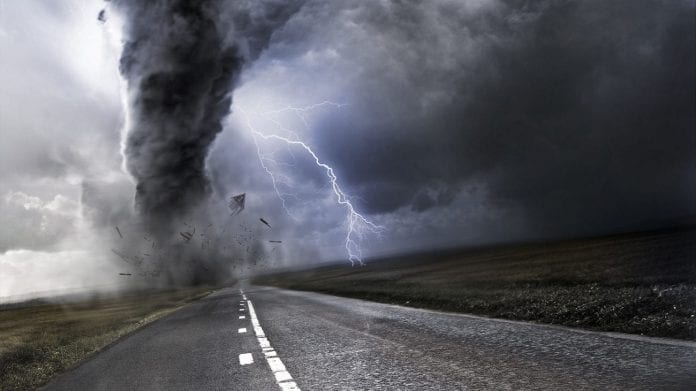Tornado is a powerful storm which is a mixture of wind and thunderstorm clouds that extends from the clouds to the ground, and it takes a funnel shape. They can be very destructive and commonly occur in the United States, particularly in the middle belt and parts of the east coast. Every year, about 800 tornadoes strike different areas of the US, but most of them are very mild and short-lasting. However, some of these can be devastating, causing material damage to the facilities and homes, and sometimes even take the lives of the unlucky people that get in their way.
Tornadoes occur throughout the whole year, especially in late spring and summer. March, May, and June are the months in which these storms often hit, and they are the strongest in this period of the year, but they become weaker in the fall. Usually, they occur during the daytime, and their movement is from the southwest to the northeast in most cases. They cover the area of about 300-400 yards and, depending on a storm they can travel at speed between five and 60 mph.

How Do Tornadoes Form?
There are different types of tornadoes, but the most powerful ones are those that form out of supercell storms. The sun heats up the surface on the land, and the warm, lighter air starts to rise, where it meets the colder heavier air above it. A wind shear (when two winds blow together in a location, but they are at different levels and speeds) helps set off a tornado. The faster-moving air starts spinning and rolling over the slower wind, gathering pace and accelerating.
As the winds build up, strong and warm air forces the spinning winds vertically upward, causing an updraft. The wind gains momentum, and it starts creating a vortex, allowing the wind enough energy to fuel itself. At this point, a tornado is fully formed, and it touches the ground, moving in the direction of the thunderstorm winds.
Types of Tornadoes
Six categories of Tornadoes exist, and the scale that measures them is called The Fujita Tornado Damage Scale. They are listed below.
• F0 – LIGHT – They are very common (60% of all tornadoes) and they can displace light-weight objects such as trash cans, but can hardly do any additional damage.
• F1 – MODERATE – They make up 28% of all tornadoes, and they can cause minor damage to landscape, trees, rooftops, and windows.
• F2 – CONSIDERABLE – These can break tree branches and bend trees. They can displace various objects of all sizes which cause considerable damage to property.
• F3 – SEVERE – Severe Tornadoes can lift trees out of the ground and even break building walls. Luckily only 3% of all tornadoes are this powerful.
• F4 – DEVASTATING – Even well-constructed homes are damaged significantly, while cars are blown away through the air as if they are toys. Tornadoes of such power are extremely rare.
• F5 – INCREDIBLE – Less than 1% of tornadoes are in this category, and they will completely demolish everything that stands in their path.
Tips and Tricks

Tornadoes can come unannounced, so it is important that you are prepared. There are some things you can do in case a tornado is coming your way. Before it even strikes, make sure that you have, or know someone who has a safe place to hide from it. The basement will do. Place your first aid kit in your shelter as well as some emergency supplies such as water and food to serve you if the things go badly. Also, keep track of the weather.
When the tornado approaches, leave everything behind and take shelter immediately. If you are out in the open, find the nearest building and ask for shelter. In case you are stuck in the car, cover your head with your arms and never look through the window because there is a possibility of debris hitting and hurting you. Flying objects are dangerous, and you can never see them coming.
Even when everything is over, be careful of flying objects and structures which can still fall. Broken glass could be all over the place, so wear safety garments when you walk across debris. Keep track of your destroyed items if your insurance company needs them.









